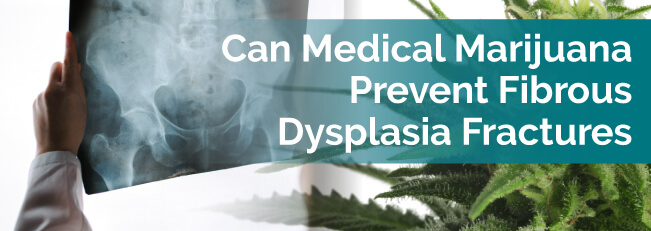
Fractures and bone deformities are a common characteristic of fibrous dysplasia. This benign condition, although mild in most cases, can lead to the development of many serious complications. Fibrous dysplasia can affect people of all ages, races and genders. It’s thought that many people have the disorder and don’t even know it.
There are few medical options for patients with fibrous dysplasia. Since there’s no cure, medical treatments seek to ensure those with the disorder can live their lives to the fullest. Medication and surgical options are used to make sure the condition does not progress.
To those with severe cases of fibrous dysplasia, prevention of fractures is of the utmost importance. Depending on the patient, the disease can cause difficulties with mobility and other bodily functions. Medical marijuana is used by some fibrous dysplasia patients to curtail bone pain. However, research studies are finding that there may be a link between cannabis and bone health. Could medical marijuana be the key to preventing fractures in patients with this condition?
Patients born with fibrous dysplasia live with the risk of broken or fractured bones every day. A defective gene in the cells of one or multiple bones causes abnormal development. The condition causes the healthy bone to be replaced by fibrous tissue or immature bone. The tissue appears scar-like or tumorous, and the affected areas are much softer than normal bone tissue.
The condition is not inherited, and most patients only experience the symptoms in one bone of their body. A polyostotic version can affect multiple bones, but this is less common. Bones that are commonly affected by fibrous dysplasia include:
There is no cure for fibrous dysplasia, and the medical world is unsure what causes this specific gene mutation. Because of this, there are limited options to help patients manage the disorder.
Repeated fractures in weakened bones is a common issue for patients with fibrous dysplasia. That’s why most medical options for patients seek to alleviate this risk. There are a few actions that can be taken, although choices are limited:
Because of marijuana’s status as a federally banned drug, medical research is currently insufficient. However, there are a few studies that show promising links between cannabis and bone health. Besides being an excellent analgesic for patients struggling with pain associated with their fibrous dysplasia, marijuana could help patients prevent fractures and support healing after fractures occur.
Medical marijuana works well with our body’s endocannabinoid system (ECS), which brings balance to many bodily functions through a connection of receptors found in almost every major system. The cannabinoids in marijuana bind to these receptors, helping the ECS find balance if a disorder or injury occurs.
The cannabinoids CBD, CBC and CBG have been shown to have the following effects:
Although more research is required, early testing proves this could be yet another benefit of cannabis. If you feel medical marijuana is a good treatment option for you, speak to your doctor. It’s important to work out a treatment plan under their guidance, as they know the specifics of your condition. For more information on how cannabis treatments could help patients with fibrous dysplasia, contact a cannabis-certified doctor in your state or a medical marijuana dispensary to speak to a budtender.
For more information about how cannabis can be used to treat Fibrous Dysplasia, check out our resources: